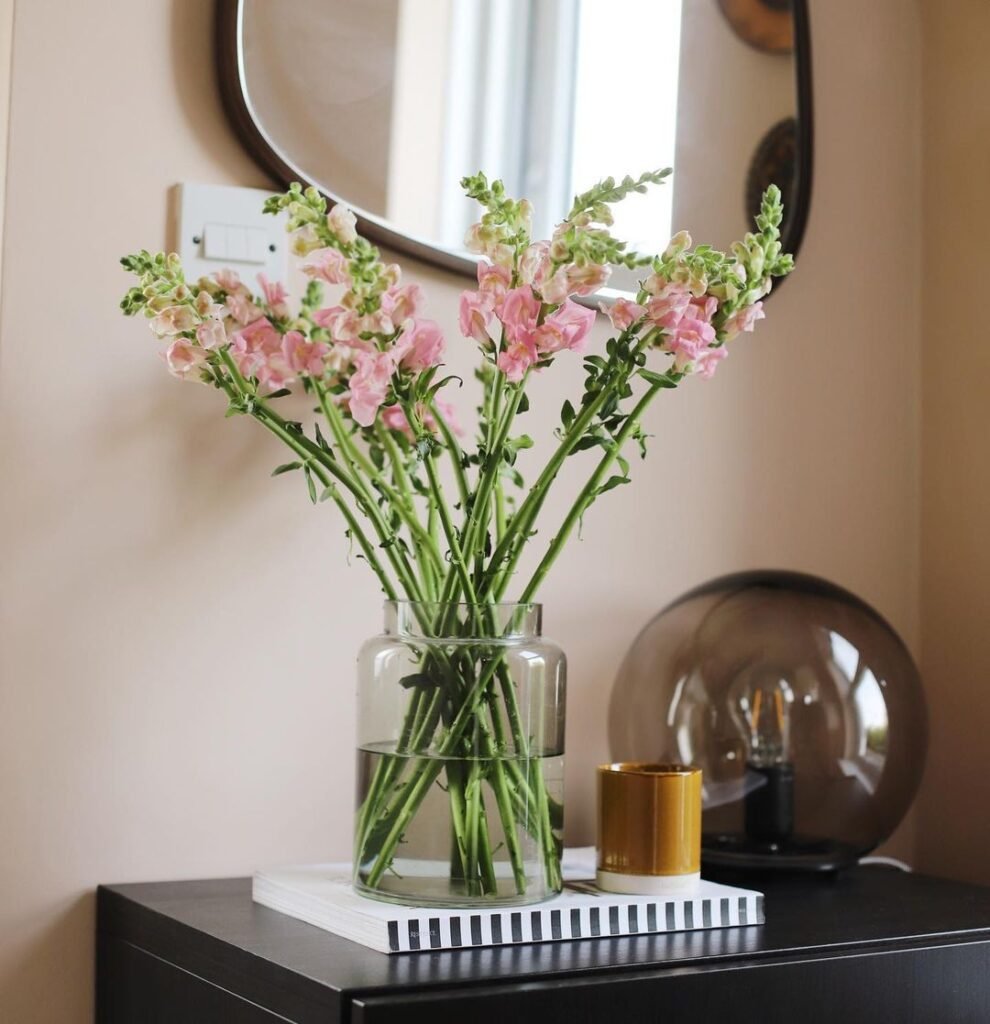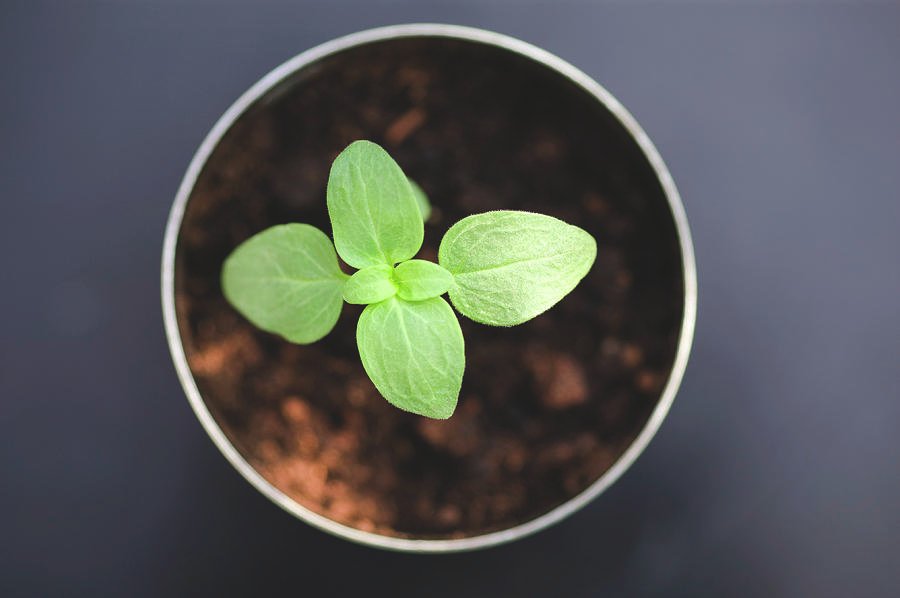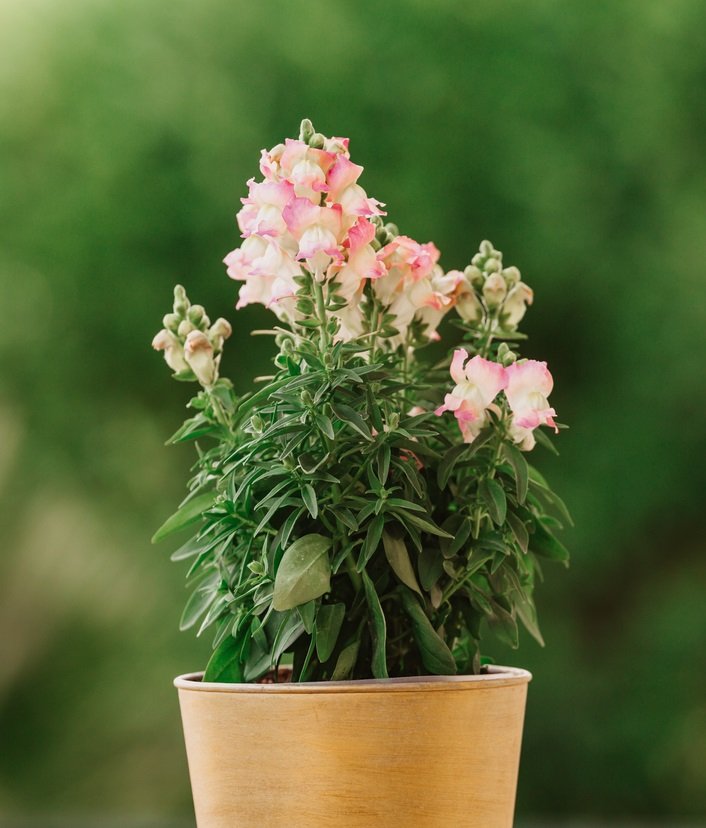The pink snapdragons is a fascinating example of incomplete dominance in genetics, where the flower color is a blend of red and white parent flowers. Here’s some information about pink snapdragons:

Scientific Name: The pink snapdragon is part of the genus Antirrhinum, commonly known as dragon flowers or snapdragons.
Appearance: Snapdragons are known for their distinctive flowers that resemble a dragon’s face, which can open and close when squeezed laterally
Color Inheritance: When a red-flowered snapdragon (homozygous dominant) is crossed with a white-flowered one (homozygous recessive), the resulting offspring will have pink flowers (heterozygous). This is due to the incomplete dominance of the flower color alleles.
Habitat: Snapdragons are native to rocky areas of Europe, the United States, Canada, and North Africa.
Uses: They are widely used as ornamental plants in gardens and as cut flowers due to their vibrant colors and unique flower shape.
Snapdragons are not only beautiful but also serve as an excellent educational example of how inheritance works in plants. If you’re interested in gardening or botany, snapdragons can be a delightful addition to your garden!
The History and Origins of the Pink Snapdragon Flower

The snapdragon flower, or Antirrhinum, has been around for a long time. It’s called snapdragon because it looks like a dragon’s mouth that opens and closes. It grows in Europe, North America, and Northern Africa. People really like the pink kind. All over the world, people think the pink snapdragon is pretty and have made up stories and meanings about it.
What Are Snapdragons?
Snapdragons are a type of flower from a group called Antirrhinum. People also call them dragon flowers because they look like a dragon’s face when you squeeze them. They originally come from Europe, North Africa, and the USA.
How to Grow Pink Snapdragon Flowers in Your Garden
Growing pink snapdragon flowers in your garden can be a rewarding experience. Here are some tips to help you cultivate these beautiful blooms:

Choosing the Right Location: Ensure the location receives 6-8 hours of direct sunlight daily.
If you live in an area with hot summers, some afternoon shade can prevent stress on the plants.
Soil Quality: Pink snapdragons prefer well-drained loamy soil.
Amend the soil with organic matter like compost or well-rotted manure to enhance drainage.
Soil pH: Aim for a soil pH between 6.0 and 7.0, which is slightly acidic to neutral.
Test your soil’s pH with a soil testing kit available at gardening stores or through your local agricultural extension office.
Planting Your Pink Snapdragons: Space the plants 9-12 inches apart to allow for optimal air circulation and sunlight exposure.
Prepare the planting area by cultivating the soil to a depth of about 8-10 inches and removing any weeds, rocks, or debris
Caring for Your Snapdragons:
- Water the snapdragons regularly, especially during dry spells.
- Fertilize with a balanced flower fertilizer according to the product instructions.
- Deadhead spent flowers to encourage more blooms.
- Protect the plants from strong winds and support taller varieties with stakes if necessary.
check out Snapdragons: Exploring Varieties, Including Pink Snapdragons
Cultivation, Care and Tips of Pink Snapdragon Flower

Taking care of pink snapdragons is easy. They need you to take off the old flowers so new ones can grow. It’s important to water the soil at the bottom of the plant to stop rust, a plant disease. When it’s cold, cover the roots with mulch to keep them warm and protected.
5 Reasons Why Pink Snapdragon Flowers Are Perfect for Urban Gardens
- Space-saving: Their upward growth means they occupy less horizontal space.
- Pollinator attractors: They lure beneficial insects, aiding in the garden’s overall health.
- Air purifiers: They absorb pollutants, making city air cleaner.
- Easy maintenance: Adaptable to pots and planters, they require minimal care.
- Year-round beauty: With proper care, they can bloom in multiple seasons.
Prevention and Treatment of Pink Snapdragons:
Pink snapdragons are pretty but can get sick from bugs and plant sickness. Little bugs called aphids can make them stop growing right and make their leaves curl. If you check your plants often and use bug soap early, you can stop these bugs from causing trouble.
Rust is a plant disease that looks like orange spots under the leaves. To stop it, make sure there’s enough air moving around the plant and water the soil, not the leaves. If you see these spots, take off those leaves and throw them away right away.
check out How to Grow and Care for Snapdragon Flowers
The Lifecycle of a Pink Snapdragon Flower: from Seed to Bloom

Growing snapdragons is amazing. They start from small seeds and if you take good care of them, they begin to grow. First, you’ll see a circle of leaves, and then a long stem with lots of little buds. These buds open up to show the bright pink snapdragon flowers we love. If you keep taking care of them, they can bloom for many years because they come back every season. Read more.
check out How to Start Snapdragons from Seed
In short, the pink snapdragon is not only beautiful but also tough and can grow in many places. It’s a great choice for any garden, big or small, in the country or in the city. Growing this flower can make any garden space happier and more colorful.
Pingback: 7. Adding Tropical Flare with Variegated Banana Plants -
Pingback: Hoya Joy : The Delightful Wax Plant for Your Home - Gardener's School
Pingback: Butterfly Bushes : Tips for Growing Beautiful Varieties